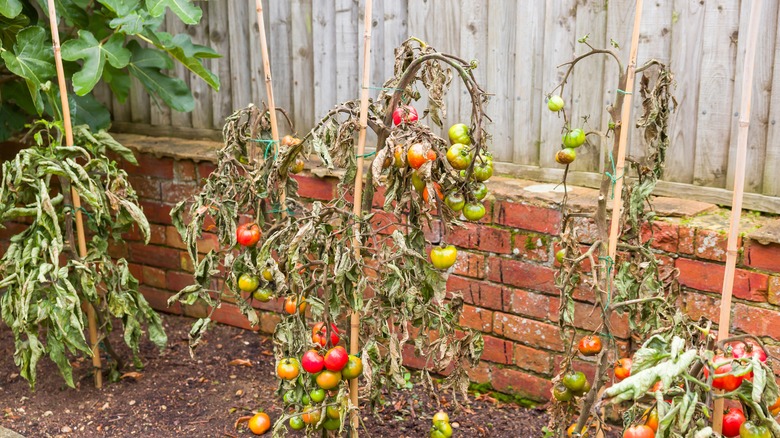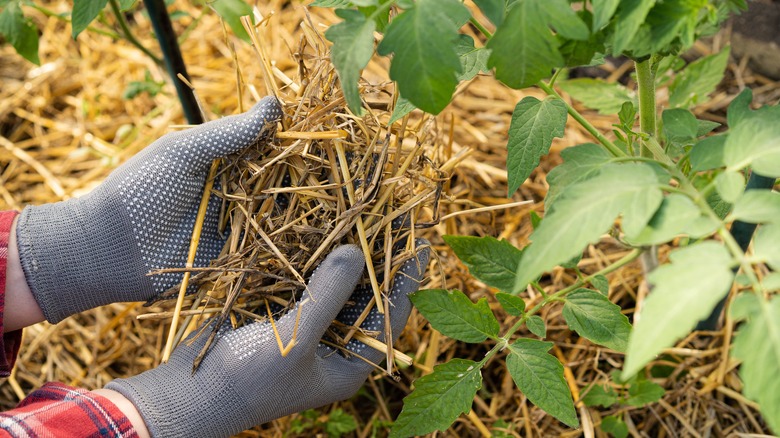Keep Tomato Plants Blight-Free With A Simple Garden Addition
Tomatoes are perhaps among some of the most sought-after veggies for home gardens. You might even consider choosing some of the easiest varieties of tomatoes to grow, as some of them may be naturally more resistant to diseases than others. When it comes to blight though, prevention is the best course of action to help protect your tomato plants. Adding mulch around your tomatoes can help protect them from this devastating fungal disease — especially when used with other preventive measures and regular monitoring.
Mulch offers several benefits to tomatoes. Not only does it help keep the roots cool and prevent them from drying out, but it also helps to protect the rest of the plant from common diseases. This includes tomato blight, which is a fungus that thrives in moist conditions. What's more, mulching around tomato plants helps prevent the spread of diseases during watering, when these pathogens might be present in the soil and then splash up onto the rest of the plant. There are multiple types of mulch that can help here, but some of the best options for tomato plants include straw, wood chips, grass clippings, and other natural-based options. In addition to blight prevention, adding mulch is also one way you can help manage weeds that can affect your tomato plants, too.
Tips for applying mulch, and how to identify blight in tomato plants
Mulching is among one of the many tips for growing the best tomatoes in your yard. For the best results, experts recommend applying mulch in thick layers (between 2 and 3 inches) around each plant. Taking care not to overwater the plants or get water on the leaves can also help protect them from blight. If you have multiple tomato plants, be sure to space them out far enough from one another so their leaves do not touch. This can help keep them both dry and blight-free.
It's also important to correctly identify signs of tomato blight so you can address the issue and stop it in its tracks. Some of the classic signs include wilting of the plant, and browning of the leaves and stems. Unfortunately, no commercial fungicides can get rid of tomato blight, so if you do see early signs, your mission is to prevent further spread of the disease. This may involve picking off leaves and stems of the affected plant, or perhaps digging out the entire plant to help save others growing nearby.

